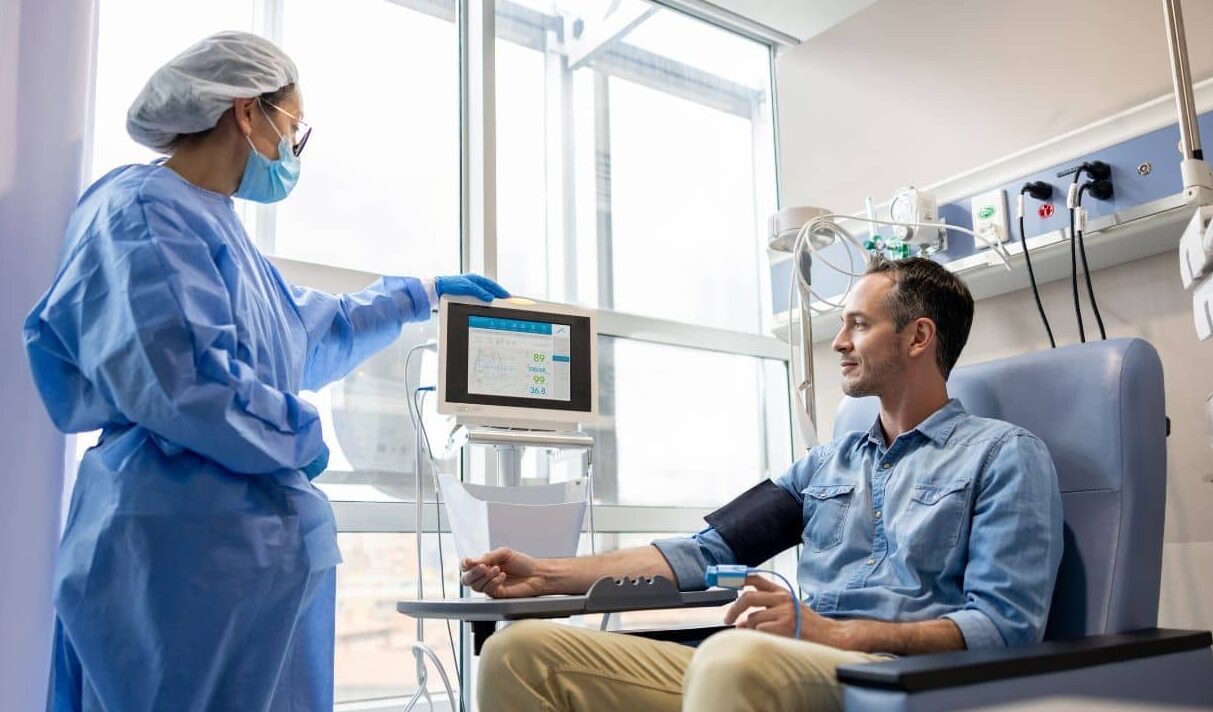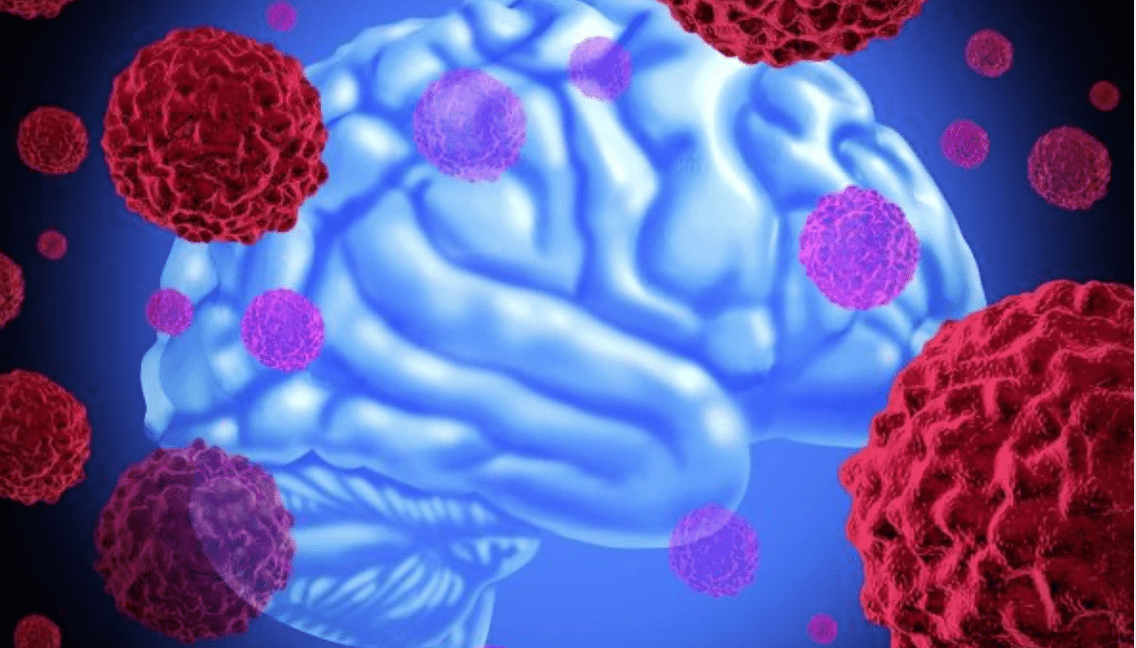-
 News
When glucose levels are low, chemotherapy ceases to affect cancer cells
News
When glucose levels are low, chemotherapy ceases to affect cancer cells
-
 News
Excessive treatment of prostate cancer in older men may reduce quality of life without increasing its duration
News
Excessive treatment of prostate cancer in older men may reduce quality of life without increasing its duration
-
 News
Brain cancer can be cured by viruses
News
Brain cancer can be cured by viruses
-
 News
Ways to reduce lymphatic pain in breast cancer have been found
News
Ways to reduce lymphatic pain in breast cancer have been found
-
 News
Scientists have turned bacteria into a powerful weapon against cancer
News
Scientists have turned bacteria into a powerful weapon against cancer
All news
Multiple sclerosis treatment
Multiple sclerosis (MS) is a chronic disease of the immune system that causes scarring in the brain and spinal cord. Symptoms can vary depending on the location of the scars: blurred vision, dysfunction of the arms or legs, discoordination, or loss of sensation. According to the WHO, about 2.5 million people suffer from multiple sclerosis.
Modern MS clinics determine the correct form of MS in the early stages, when treatment is most effective.
The right medications, including new monoclonal antibodies, relieve symptoms, stop disease progression, and prevent flare-ups.
MedTour patients recommend clinics for the treatment of multiple sclerosis:
Doctors for the treatment of multiple sclerosis
Frequently Asked Questions
This is a process that is described as:
- Chronic (continuous) course,
- Autoimmune process,
- Demyelination.
Chronic (continuous) course. Remissions alternate with recurrence, which are treated, but some signs remain, accumulate, lead to disability and premature retirement.
Autoimmune process. The immunity perceives the nervous system as foreign and fights her by producing special substances — antibodies.
Demyelination. The antibodies destroy the so-called meninges or myelin sheath of nerves, which cause impaired transmission of nerve impulses. This is how lesions of cicatrization appear in many areas.
It is not known what causes the development.
Many observations indicate that there is a genetic predisposition and the influence of environmental factors. Viral infections (such as measles, herpes, or Epstein-Barr viruses) are discussed, as well as exposure to sunlight and smoking (nicotine).
- Genetic triggers are: female sex and HLA—DR2 gene,
- Environmental factors are: infections that invade nerves and vary their structure; and vitamin D deficiency.
The combination of the above leads to the fact that the antibodies produced are not destroyed and certain parts of the nervous matter gradually lose their functionality.
Signs are not the same. Spastic paralysis and loss of coordination are usually early signals. Tingling of the extremities is noticed with the same frequency. Clinical manifestations depend on the degree and damage place. Depending on which nerve tract is damaged, different functions do not work. In principle, any duties controlled by the CNS can be affected.
The most common symptoms are: speech and vision impairment, tremors and weakness and / or numbness in the limbs. In about 30% of patients, the first sign is visual impairment. There may also be pain syndrome of varying intensity.
Some patients suffer from severe fatigue and lack of drive, some from depression.
The hallmark of any manifestation is its duration (from 24 hours to several months).
There are several typical variants:
- Relapsing—remitting is the most common kind. It has an undulating course of sickness. The periods of exacerbation are replaced by the disappearance of symptoms. Remission can last for months or years, during which all symptoms may pass away, but full restoration of organ duties is impossible, and each subsequent assault increases the injury of NS,
- Secondary progressive is an alternation of indulgences and seizures is changed by permanent attacks with a steady accretion of neurological symptoms and progression of the ailment,
- Primary progressive is a gradual and almost continuous progression of illness with no seasons of remission,
- Progressive with exacerbations is an unfavorable kind. It’s characterized by regular invasive attacks of the NS, to which periods of exacerbation are added.
There is no single test for recognizing multiple sclerosis. The conclusion follows from the results of several examinations.
The gold standard is MRI of the brain and/or spinal cord applying the McDonald criteria.
MRI with a high power of 3–7 Tesla, available in foreign clinics, is considered an informative and sensitive technique that visualizes tissue structures up to 0.5 mm in size and reveals the smallest foci of destruction. This test is adapted to evaluate the dynamics of the development of lesions and differentiate multiple sclerosis from other similar sickness.
Electrophysiological measurements are also part of diagnostics — in particular, the determination of the conductance of the optic nerves using the so-called evoked potentials. Additional examinations include: blood and CSF analysis.
Today this illness may be brought under control, but it cannot be completely cured. Medicaments that can completely stop evolution have not yet been invented. Since the reasons and trigger factors of the malady have not yet been fully understood, various cure options are primarily targeted at making life easier for patients.
Modern therapy aims to:
- Changes in the course of this pathology, which helps to diminish the number of escalation and, accordingly, improve the quality of human life,
- Medication of relapses.
The proper diet or dietary changes are beneficial for the positive course of the disease.
Foreign hospitals use stem cell transplantation, which helps slow down the autoimmune process in the body and promotes recovery namely remyelination.
Modern methods of diagnosis and treatment of multiple sclerosis
Multiple sclerosis diagnostics:
The initial stage
At the first meeting, the doctor asks about what worries the person, and recognizes the complaints. Then he performs a neurological examination to determine the state and functioning of the brain. If clinical manifestations characteristic of MS are present, the doctor will order an MRI scan.
The second step: instrumental researches
MRI
Ultra-high-field magnetic resonance imaging machines make it possible to confirm the diagnosis and control the course of the disease. The most powerful MRI visualizes the smallest lesions, not visible to other methods of examination.
It helps to see ranges of active inflammation, to assess the chance of developing subsequent relapses and to choose a medical strategy.
MRI with contrast
This is a liquid that is injected into the body to make the image on the tamogram brighter and clearer. Thus, the diagnostic efficiency is increased, after which it is naturally excreted from the body. Contrast fluids contain gadolinium.
This examination is performed at the first clinical attack, allowing for an earlier inference. The sooner the diagnosis is made, the faster treatment will begin, preventing the progression of the disease and improving the prognosis for the patient’s health.
MacDonald’s criteria
It is a combination of clinical, laboratory and instrumental indicators for the early diagnosis of multiple sclerosis. This test allows for the recognition of focus in people with little or no symptoms.
Evoked potentials method
Information received from the outside is transmitted every second through the senses to the brain. Because the sheath of the nerve fibers is damaged in MS, signaling is slowed down. Any delay can indicate damage to the CNS.
The third step: laboratory examinations
Blood test
Your doctor may prescribe it to rule out other diseases with similar symptoms.
The lumbar puncture
This is an additional diagnostic method. The results of this test, combined with a doctor’s examination, MRI and etc, help to make an accurate diagnosis. In people with MS, cerebrospinal fluid usually contains increased levels of immunoglobulins G and a group of proteins called oligoclonal proteins.
Multiple sclerosis treatment:
There are medicines that can ease and reduce relapse, slow the progression of the disease and improve quality of life.
Conservative therapy is used for all types of MS.
The tactics chosen by the spesialist are revised and personalized for each stage of the disease according to the type of flow.
Disease modifying therapies (DMTs)
The effect of using these drugs in the later stages is diminishing, so treatment should be started as early as possible with the strongest drugs possible.
DMTs aims:
- Reduce the frequency and severity of relapses,
- Defer the progression of the disease and the development of disability,
- Improve the quality of life of patients.
Many factors influence the choice of DMTs:
- The disease activity, which is assessed by the frequency of relapses, the rate of increasing disability and the degree of brain activity on MRI. Accordingly, the higher the activity, the earlier you need to start treatment,
- The effectiveness of the drug. The use of DMTs involves their constant use, which means a decrease in effectiveness after stopping the drug,
- The safety of the drug. Taking medication from the DMTs group implies constant thorough monitoring to track the development of possible side effects,
- Risk—taking by the patient. It is important to notify about the possible side effects of drugs and describe the risks of refusing the proposed therapy,
- Planning a pregnancy.
With timely and correct therapy of DMTs, the following options for responses to treatment are possible:
- Lack of relapse,
- Absence of progression of disability,
- Decline of inflammatory activity on MRI.
MS therapy in pregnancy
Women suffer from MS 2 times more often than men. Therefore, a possible or already developing pregnancy is the main aspect during the choice of treatment strategy.
According to international recommendations, it is necessary to achieve maximum control over the disease, which, as a rule, takes 1–2 years, and then discuss pregnancy planning with doctors.
MS therapy during pregnancy is recommended after consideration of the potential risks for both mother and fetus.
The diagnosis of MS is not a condition in which women are advised to refrain from pregnancy. In contrast, existing researches show that the disease does not influence the likelihood of conceiving and favorable pregnancy outcomes. Also, it does not influence the development of the fetus, the likelihood of premature birth and birth defects.
Managing relapses
Recrudescences in MS are due to the development of inflammation in the central nervous system, which leads to damage to the myelin sheath of nerve cells.
Not all exacerbations require treatment. Only severe relapses, the symptoms of which worsen quality of life, are treated with corticosteroids, hormones that reduce inflammation. If you have an intolerance to the recommended therapy, HP Acthar Gel can be used. Its use is limited due to its high cost and difficult availability. This drug is not registered in Ukraine.
In the absence of the desired effect, plasmapheresis is used.
Rehabilitation
The rehabilitation aims are: to restore and maintain the functions necessary for an active socialized life.
Physiotherapy is used to provide the normal functioning of the musculoskeletal system, as well as to prevent complications associated with physical impairment and the occurrence of muscle weakness.
In addition, speech rehabilitation and work with psychotherapists are practiced to provide emotional support.
Stem cell therapy
This is the kind of cells, which are present in the human body as part of the body’s recovery system. Their function is to replace damaged or dying cells.
They have the ability to transform into other cells, such as nerve, blood and muscle cells.
There are several variants of stem cells, which can be easily derived from bone marrow or adipose tissue.
The most well—studied method of stem cell treatment is the autologous (i.e., own) hematopoietic stem cells transplantation (aHSCT). Using your own stem cells minimizes the risk of rejection.
This type of therapy is considered the most preferred and recommended in the treatment of aggressive relapsing—remitting and progressive MS with high activity.
Clinical trials have shown that aHSCT is effective and leads to a slowdown in disability and an improvement in the quality of life.
Transplantation is carried out in several stages, the purpose of which is to reboot the immune system to exclude attacks on myelin and subsequent neurodegeneration.
Published:
Updated:


Information on this webpage verified by the medical expert








